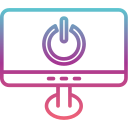Your Roadmap: From No Experience to First IT Role
Customer service, problem-solving, curiosity, and communication are powerful assets for beginners in IT. Reframe them as troubleshooting, incident resolution, stakeholder updates, and documentation. This translation helps recruiters see your value instantly, even if your past job titles don’t scream “tech.” Share your transferable skills boldly and tie them to measurable outcomes.
Your Roadmap: From No Experience to First IT Role
Portfolios speak louder than resumes for those starting a career in IT with no experience. Build two to four small, well-documented projects that demonstrate real problem-solving, not just academic exercises. Host them on GitHub, write readme files like mini case studies, and show screenshots or demos. Make it obvious what you did and why it matters.
Your Roadmap: From No Experience to First IT Role
Break the journey into 14-day sprints with one learning goal and one deliverable. For example, learn basic networking and configure a home lab, then publish a short guide. Momentum beats motivation. Share progress on LinkedIn to attract mentors and accountability buddies. Ask for feedback and keep refining your approach based on what resonates.

